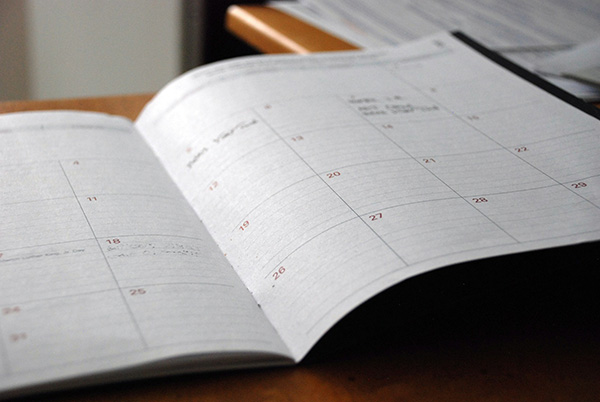Patent owners should be aware of the marking requirement to potentially obtain royalties from infringers.

By Michael P. Kella and J. Bradley (Brad) Luchsinger
A patent owner’s right to obtain a reasonable royalty from an infringer is an important benefit of the United States patent system.1 And patent owners who sell or otherwise commercialize their patented products can seek an alternative measure of damages in the form of lost profits.2 These are the profits the patent owner would have made if not for the infringer’s activity—and may be more than what’s deemed “reasonable” for a royalty.3 Regardless of methodology, a patent owner may generally seek these damages to compensate for infringing activity that occurred for a full 6 years prior to bringing a legal claim against the infringer.4 However, a patent owner’s ability to secure these pre-suit damages can be curtailed if they failed to abide by the US patent system’s “marking” requirement. As a result, companies must understand when and how to comply with the patent marking statute.
The marking requirement set forth in 35 U.S.C. § 287(a) generally requires that a patent owner do one of three things if making or selling a physical product that is covered by a U.S. Patent:5
The policy behind the marking requirement can be considered one of fair notice—so that the public can identify whether a product is patented and potentially avoid innocent infringement.6
The marking requirement does not apply to patents that only claim processes or methods.7 Nor does a patent holder need to mark physical products that are produced using patents that claims only claim processes or methods. But if a patent contains both apparatus and process / method claims, then the marking requirement does apply if there is tangible item to mark by which notice of the asserted process or method claims can be given.8
If the patent owner makes or sells a patented physical product and does not “mark” as required, then the patent owner cannot collect monetary damages from an infringer until it either (1) sues the infringer or (2) provides actual notice of its patent rights to the infringer by sending a letter or other correspondence.9
Actual notice requires an affirmative communication of a specific charge of infringement by a specific accused product or device. Here, the focus is on what the patent owner communicates to the infringer.10 What the infringer knows or understands about infringement is irrelevant.11 In this regard, general notice—such as notifying an entire industry of the patent and generally advising companies not to infringe—has been held insufficient.12
It is important to note that the marking requirement is somewhat unforgiving. Correcting non-compliance with the marking requirement will not allow recovery of damages for past infringement that occurred during the prior period of non-compliance.13 For example, if a patent owner fails to comply for 4 years after the patent’s issuance, and then complies for the next 2 years before bringing suit at year 6 against a competitor who has been infringing for the entire post-issuance 6-year period, the patent owner will lose out on damages for the first 4 years of non-compliance.
Don’t overlook the marking requirement. Otherwise, you risk losing out on what could be significant monetary damages if and when others infringe your patents. So take inventory of your patents and the products they cover. If your patents claim physical products, ensure that you are marking your covered products in one of the three ways discussed above. And consider making it a practice to regularly check that your patented products stay in compliance.
If you’ve not historically marked your patented products, don’t give up! You can still start marking to preserve your right to damages on a “go forward” basis from the time of correction. Or, if it’s not practical to immediately begin marking and you’re aware of others that are infringing, consider an affirmative communication to the infringers that provides actual notice.
And perhaps most importantly, consult a competent patent attorney if you have any questions about how to properly mark your particular products or provide actual notice to suspected infringers.

Michael P. Kella is an associate at Harness IP. Based in Metro St. Louis, Michael advocates for clients to obtain intellectual property protection and assists in resolving complex intellectual property infringement disputes.

J. Bradley (Brad) Luchsinger is a Principal at Harness IP. Based in Metro Detroit, Brad’s practice focuses on patent protection and intellectual property litigation. Brad also prepares and prosecutes patent applications with experience in automotive technologies, medical devices and building structures.
1 See 35 U.S.C § 284 (“Upon finding for the claimant the court shall award the claimant damages adequate to compensate for the infringement, but in no event less than a reasonable royalty for the use made of the invention by the infringer, together with interest and costs as fixed by the court.”).
2 See Mentor Graphics Corp. v. EVE-USA, Inc., 851 F.3d 1275, 1285 (Fed. Cir. 2017) (“[L]ost profit patent damages are no different than breach of contract or general tort damages. Thus, the fact finder’s job is to determine what would the patent holder have made (what would his profits have been) if the infringer had not infringed.”).
3 See id.
4 35 U.S.C. § 286.
5 The marking requirement discussed in this post does not apply to patents that only claim processes or methods. See Arctic Cat Inc. v. Bombardier Rec. Prods., 950 F.3d 860, 864 (Fed. Cir. 2020). But if a patent contains both apparatus and process / method claims, then the marking requirement does apply if there is tangible item to mark by which notice of the asserted method claims can be given. See Am. Med. Sys. v. Med. Eng’g Corp., 6 F.3d 1523, 1538 (Fed. Cir. 1993).
6 See Arctic Cat Inc. v. Bombardier Rec. Prods., 950 F.3d 860, 865 (Fed. Cir. 2020
7 Id. at 864.
8 See Am. Med. Sys. v. Med. Eng’g Corp., 6 F.3d 1523, 1538 (Fed. Cir. 1993).
10 Arctic Cat Inc., 950 F.3d at 864.
11 Id.
12 Amsted Indus. v. Buckeye Steel Castings Co., 24 F.3d 178, 187 (Fed. Cir. 1994) (“For purposes of section 287(a), notice must be of ‘the infringement,’ not merely notice of the patent’s existence or ownership.”).
13 See id. at 864.
In this episode, I sat down with Beejan Giga, Director | Partner and Caleb Emerson, Senior Results Manager at Carpedia International. We discussed the insights behind their recent Industry Today article, “Thinking Three Moves Ahead” and together we explored how manufacturers can plan more strategically, align with their suppliers, and build the operational discipline needed to support intentional, sustainable growth. It was a conversation packed with practical perspectives on navigating a fast-changing industry landscape.